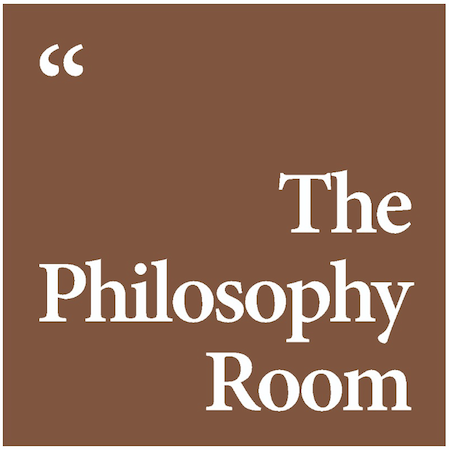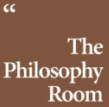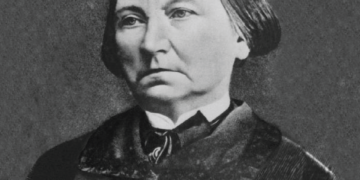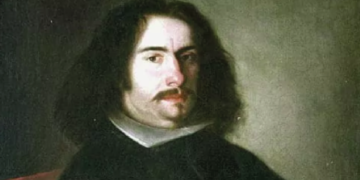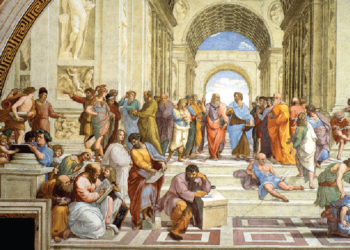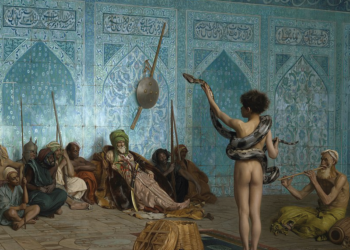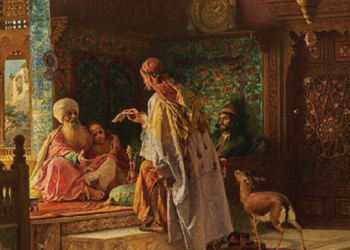Beatus of Liébana
1) His Biography
Beatus of Liébana was a prominent monk and theologian of the 8th century, best known for his influential role in the religious and intellectual life of the early medieval Iberian Peninsula. He was most likely born in the Kingdom of Asturias, in northern Spain, around the early 700s, although the precise date and details of his early life remain uncertain. His monastic name, “Beatus,” and his association with the monastery of Santo Toribio de Liébana in the Cantabrian Mountains suggest he led a secluded religious life deeply rooted in scriptural study and theological reflection.
Beatus came to historical prominence during a period of intense political and religious transformation in Iberia. Following the Muslim conquest of Hispania in 711, the Christian north became a refuge for clerics, monks, and laypeople fleeing the south. Within this context, Beatus emerged as a leading voice in preserving and articulating Christian identity. He is most famously remembered for composing the Commentary on the Apocalypse, a text that would go on to shape medieval Christian thought across Western Europe. His writing is marked by its vivid imagery and moral urgency, likely reflecting the tumultuous atmosphere in which he lived.
Although little is known about his formal education, Beatus demonstrated deep familiarity with both Eastern and Western Christian traditions. His work displays extensive knowledge of patristic sources, especially those of Augustine of Hippo, Jerome, and Isidore of Seville. It is believed he was part of a monastic community that served as a centre of scholarship, offering him access to rare theological texts. His engagement with these works reveals a man of considerable erudition and spiritual discipline, committed to defending orthodoxy in an era rife with doctrinal challenges.
Beatus was also active in contemporary theological debates, most notably the Adoptionist controversy. This movement, associated with figures like Elipandus of Toledo, proposed that Christ, in his human nature, was adopted as the Son of God. Beatus strongly opposed this view, which he saw as a dangerous heresy undermining the doctrine of the Incarnation. Along with Eterius, the bishop of Osma, Beatus authored treatises refuting Adoptionism, garnering support from figures such as Alcuin of York and even influencing the theological stance of the Carolingian court.
His opposition to heresy and his detailed apocalyptic commentary earned him both reverence and notoriety in his lifetime. While Beatus never held high ecclesiastical office, his authority rested on the intellectual and spiritual influence he exerted through his writings. His legacy endured through the copying and illumination of his Commentary, which was reproduced in many lavishly illustrated manuscripts during the medieval period, known today as “Beatus manuscripts.” These texts not only preserved his theological insights but also served as artistic masterpieces of medieval Iberian culture.
The final years of Beatus’s life remain largely undocumented, but it is believed that he died around the year 798. Despite the scarcity of biographical data, his impact on the Christian culture of medieval Spain was considerable. Through his scholarship and moral leadership, he helped to define the identity of Christian communities living under the shadow of Islamic rule and forged a lasting intellectual tradition in the monastic world.
Today, Beatus of Liébana is remembered not merely as a commentator on scripture but as a figure who bridged the gap between theological orthodoxy and artistic expression. His life encapsulates the tension and resilience of Hispanic Christianity in the early Middle Ages, and his work continues to be studied for its historical, theological, and artistic significance.
2) Main Works
Commentarius in Apocalypsin (Commentary on the Apocalypse)
Beatus’s most famous and enduring work, this is a detailed commentary on the Book of Revelation. It combines theological exegesis with vivid eschatological imagery, drawing on earlier authorities like Tyconius, Augustine, and Isidore of Seville. The work interprets the Apocalypse in a moral and political context, urging Christian vigilance in the face of heresy and Muslim rule. The Commentary was widely copied and illuminated during the Middle Ages, giving rise to the celebrated “Beatus manuscripts.”
Adversus Elipandum (Against Elipandus)
Co-authored with Bishop Eterius of Osma, this polemical work attacks the teachings of Elipandus of Toledo, who supported the Adoptionist heresy. Beatus argues forcefully against the claim that Christ, in his human nature, was the adopted Son of God. The treatise upholds the unity of Christ’s divine and human natures and defends Nicene orthodoxy. It played a key role in shaping early medieval theological debates in the Iberian Peninsula and gained attention beyond the region.
Liber de Fide (Book of Faith) (attributed, though authorship is debated)
This shorter theological treatise addresses the core tenets of Christian belief, especially in response to perceived doctrinal errors. While its authorship by Beatus is uncertain, the work reflects similar theological concerns, particularly the defence of orthodoxy against heretical interpretations. It offers a concise statement of faith meant to guide and instruct the faithful in tumultuous times.
Letter to Bishop Eterius (fragments referenced in other works)
Though not a standalone publication, some surviving references point to letters exchanged between Beatus and Eterius in the context of the Adoptionist controversy. These letters reveal Beatus’s strategic thinking and pastoral concern, as well as his role as a theological advisor within his monastic and ecclesiastical network.
Hymns and Liturgical Texts (possibly attributed)
While direct evidence is limited, some scholars believe Beatus may have composed or adapted hymns and prayers for use in monastic liturgy. These texts would have reflected his eschatological theology and scriptural focus, integrating doctrinal clarity into communal worship.
3) Main Themes
Apocalyptic Expectation and Eschatology
Central to Beatus’s thought is a vivid preoccupation with the end times. His Commentary on the Apocalypse reflects a strong eschatological vision rooted in biblical prophecy, especially the Book of Revelation. He interprets historical events, such as the Muslim presence in Iberia, as signs of impending judgement. This theme served both to warn the Christian faithful and to strengthen their spiritual resilience in the face of adversity.
Orthodoxy and Anti-Heresy Polemic
Beatus was deeply committed to defending Christian doctrine against heretical views, especially Adoptionism. In works like Adversus Elipandum, he argued for the full divinity and humanity of Christ, rejecting any suggestion of adoption in Christ’s human nature. This concern with doctrinal purity reflects his broader aim of preserving unity and truth within the Christian community.
Biblical Exegesis and Scriptural Authority
A thorough engagement with the Bible is evident throughout Beatus’s writings. He approached Scripture as the ultimate authority on all theological matters, employing allegorical, moral, and literal methods of interpretation. His reliance on patristic sources—particularly Augustine, Isidore, and Jerome—further anchored his readings in established Christian tradition.
Spiritual Vigilance and Moral Purity
Beatus repeatedly urged his readers to remain spiritually alert and morally upright. In his apocalyptic framework, the forces of evil were active and imminent, necessitating constant readiness among the faithful. This theme of vigilance was not only theological but also pastoral, aimed at guiding monks and lay Christians alike in their conduct and devotion.
The Role of the Church as a Spiritual Stronghold
For Beatus, the Church stood as the last bastion of divine truth amid growing darkness. He viewed the monastic community not merely as a place of retreat but as an active guardian of orthodoxy and learning. The Church’s responsibility to instruct, correct, and resist heresy features strongly in his writings, reflecting a vision of Christian life that was both contemplative and combative.
Symbolism and Allegory in Christian Art and Literature
His use of symbolic language and allegorical imagery, especially in his Apocalypse commentary, had a profound influence on medieval visual culture. Beatus’s symbolic interpretations of beasts, angels, and cosmic battles were not only theological but also designed to inspire awe and meditation. This theme also contributed to the rich tradition of Beatus manuscripts with their striking illuminations.
Historical and Political Awareness
Though grounded in theological concerns, Beatus did not shy away from interpreting the political realities of his time. He viewed the Muslim conquest and the Adoptionist crisis as part of a broader cosmic struggle between good and evil. This historical consciousness, filtered through a theological lens, added urgency to his call for faithfulness and helped shape a uniquely Iberian Christian identity.
4) Beatus as a theologian
Beatus of Liébana stands out in the intellectual landscape of early medieval Spain not only as a monk and commentator but as a distinctive theologian whose influence extended well beyond the confines of his monastery. His theological outlook was shaped by the pressing concerns of his time: the Islamic presence in Iberia, internal doctrinal disputes, and the growing need to preserve Christian orthodoxy in a fragmented religious landscape. His writings reflect a blend of erudition, spiritual urgency, and pastoral concern, positioning him as a key figure in the theological defence of Western Christianity during a period of crisis.
A defining characteristic of Beatus as a theologian is his unwavering commitment to orthodoxy. This is particularly evident in his engagement with the Adoptionist controversy, where he took a firm stance against the teachings of Elipandus of Toledo. Adoptionism, which claimed that Christ was the adopted Son of God in his human nature, was seen by Beatus as a dangerous deviation from Nicene Christianity. Through carefully reasoned arguments rooted in Scripture and patristic tradition, Beatus countered this heresy, demonstrating both theological acumen and an ability to communicate complex doctrines to a wider ecclesiastical audience.
Beatus also contributed significantly to the development of biblical exegesis. His Commentary on the Apocalypse is not merely a spiritual meditation but a highly structured theological work, drawing from the writings of Tyconius, Augustine, Isidore of Seville, and others. He did not seek originality for its own sake but acted as a transmitter and synthesiser of the Christian intellectual tradition. In doing so, he created a resource that served not only as a scriptural guide but also as a doctrinal touchstone for generations of readers. His method combined literal and allegorical interpretation, with a marked emphasis on spiritual symbolism and divine justice.
Eschatology plays a central role in Beatus’s theology. His vision of the end times is both richly imaginative and grounded in his understanding of divine providence. Unlike later millenarian thinkers who might predict specific dates or worldly upheavals, Beatus’s apocalypticism was more moral and ecclesiastical. He saw the signs of the times—the heresies, invasions, and moral decay—as indicators of spiritual trial, not just political decline. His theological framework thus encouraged spiritual vigilance and penitence, offering a compelling explanation for contemporary events within the context of divine judgement.
Another key dimension of Beatus’s theological thought lies in his high regard for the authority of the Church and the monastic vocation. He regarded the monastery as a fortress of truth, where Scripture could be read, preserved, and interpreted free from corruption. He also saw the Church as an active force in the world’s battle between good and evil, with monks and clergy bearing responsibility not only for personal salvation but for the protection of the faithful from error. His theology thus had an inherently communal and ecclesial orientation.
Beatus’s work shows an impressive command of theological vocabulary and categories for a monk in remote northern Spain. His ability to engage with continental thinkers, notably gaining the support of Alcuin of York and Charlemagne’s court in his anti-Adoptionist campaign, underscores his stature in the wider Christian world. This cross-regional recognition reflects the strength of his arguments and the theological relevance of his positions beyond the Iberian Peninsula.
Finally, Beatus must be recognised for the spiritual tone that pervades his theology. While his arguments are rigorous, they are always directed toward spiritual edification. He does not separate intellectual clarity from pastoral responsibility. His theology is practical, aimed at nurturing faith, correcting error, and sustaining Christian communities in uncertain times. In this way, Beatus of Liébana exemplifies the kind of theologian who bridges scholarly rigour and monastic devotion, ensuring his legacy remained vivid in both textual and visual traditions for centuries to come.
5) His Legacy
The legacy of Beatus of Liébana is multifaceted, extending across theology, art, literature, and cultural identity in medieval and modern Spain. Though he lived and wrote in the 8th century, his impact endured far beyond his lifetime, chiefly through the transmission of his most celebrated work, the Commentary on the Apocalypse. His intellectual efforts helped shape the doctrinal foundations of Iberian Christianity, while the illuminated Beatus manuscripts preserved his theological vision in forms that inspired successive generations of scribes, artists, and scholars.
Perhaps the most visible aspect of Beatus’s legacy lies in the tradition of richly illustrated manuscripts known collectively as the Beatus manuscripts. These works, created between the 10th and 13th centuries, are not mere copies but interpretive visual extensions of his original commentary. Produced in monastic scriptoria across the Iberian Peninsula, these manuscripts combine vivid apocalyptic imagery with theological symbolism, helping to define the Romanesque artistic style in Spain. Their striking depictions of the cosmic battle between good and evil became powerful visual aids for the religious imagination of medieval Christians.
In theological terms, Beatus’s refutation of Adoptionism contributed to the eventual marginalisation of the doctrine within the Western Church. His rigorous defence of Christological orthodoxy influenced the broader Latin theological tradition, particularly as his arguments were taken up by Carolingian theologians such as Alcuin of York. His voice helped establish the ideological and doctrinal unity of the Christian resistance to heresy in both Spain and Francia, reinforcing the role of the monk-scholar in safeguarding ecclesiastical truth.
Beatus also left an enduring cultural and national legacy in Spain. His works became a symbol of resistance to external and internal threats to Christian identity, especially during the Reconquista. The vivid imagery and urgent moral tone of his commentary were well-suited to a society engaged in a centuries-long effort to reclaim territory and spiritual authority from Muslim rule. As a result, his name became associated with both the preservation of orthodox belief and the defence of Christian civilisation.
In a more literary sense, Beatus’s writings played a role in preserving the exegetical traditions of late antiquity and early medieval Christianity. His integration of sources from Augustine, Isidore, and others ensured that the insights of earlier thinkers remained accessible to later audiences. Through the reproduction of his Commentary, he also helped preserve the tradition of biblical commentary as a vital intellectual practice within monastic culture.
Modern scholarship continues to examine Beatus of Liébana not only for his theological positions but also for his role in shaping medieval spirituality and cultural expression. Historians of art, religion, and manuscript production have found in his works a unique convergence of textual and visual creativity. His Commentary has become a crucial source for understanding how early medieval Christians interpreted Scripture, envisioned cosmic history, and negotiated their relationship with surrounding cultures.
In recent years, Beatus has been celebrated in Spain as a figure of national historical importance. His monastery at Liébana has become a pilgrimage site, and various exhibitions have been held to display the surviving Beatus manuscripts. His work has even inspired contemporary artists and theologians interested in the intersection of word and image, faith and politics. In this way, Beatus’s legacy lives on—not merely as a relic of the past, but as a dynamic contributor to the evolving story of Christian thought and Hispanic identity.
